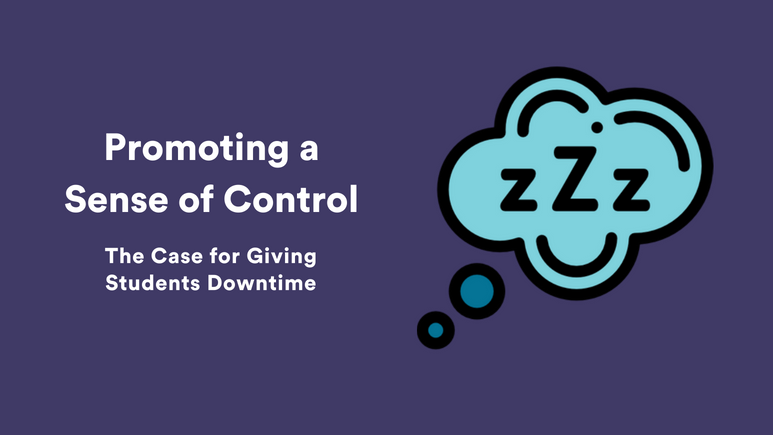
Imagine you have an uninterrupted afternoon to do whatever you want.
What would you do?
Read a book. Garden. Catch up with friends. Take a nap.
Even just the prospect of planning an afternoon of freedom can make many of us feel at ease.
How often are children ever given the option to do whatever they want for a few hours?
Not often enough, according to a new book, The Case for the Self-Driven Child.
In their new book, authors William Stixrud and Ned Johnson highlight the fact that children today very seldom have any down time.
From longer school days, afternoons packed with homework and activities, and an increased amount of time spent in front of a screen, children are rarely left pursue their own imaginations.
And the results of these packed schedules are detrimental.
It may be time for teachers and parents to think about giving kids more control of their own schedules by increasing the amount of down time they have.
The Case for Down Time
Not sure how you could reasonably make a case to your school admin team about why students need more down time?
As it turns out, the benefits are numerous.
We often think of rest or idleness as laziness. Instead, though, rest is essential for learning.
Letting the mind wander activates neural circuits and promotes mental well-being.
Stixrud and Johnson share countless reasons why over-scheduling students with work and activities can actually be detrimental.
According to the authors, kids today lack the notion that they have any control over their own lives or can participate in activities they’re passionate about.
Both at school and home, adults make decisions for children about what they do, what they read, what they eat, where they sit, etc.
The resulting sense of no control can lead to stress, anxiety, and depression.
While these findings are scary, to say the least, teachers are still responsible for making sure students learn, and this often requires a good degree of structure.
Creativity is essential in reaping the benefits of down time and students control while still doing your job.
Building Down Time Into The School Day
With countless standards to teach and skills to assess, how is it possibly feasible to allow students to have “down time”?
The key is giving students autonomy.
By letting students make choices about what they’re learning or how they’re demonstrating said learning for part a school day, you can help them build the skills needed to be self-directed.
Additionally, giving students more autonomy can work wonders for building intrinsic motivation.
There are dozens of subtle ways that you can inject more autonomy into your class day.
If you don’t already do so, include 15-20 minutes of independent reading in your schedule. During this time, students can read any book of their choice (yes, even comic books).
Or once you get to the practice part of a lesson, let students choose between working independently, with a partner, or in a small group.
Let students doodle during a lecture. You’ll be surprised how many of them really are listening.
Give students a choice of whether they want to write their essay on the computer, or by hand. If they want to complete their math project as a PPT or a physical poster.
When students finish an assignment early, let them choose what they want to work on. It’s useful to have a list of options available, but ultimately, leave it up to the student to decide.
And finally, think critically about the homework you are assigning. Oftentimes teachers feel the need to assign homework just for the sake of it.
Instead, think outside the box to provide students with home learning activities that will help them activate different parts of their brain while developing important soft skills.
And don’t forget to keep the amount of homework in check. Reinforcing learning at home is great, but it should never keep a student up late or prevent him or her from pursuing extracurricular interests.



Leave a Reply